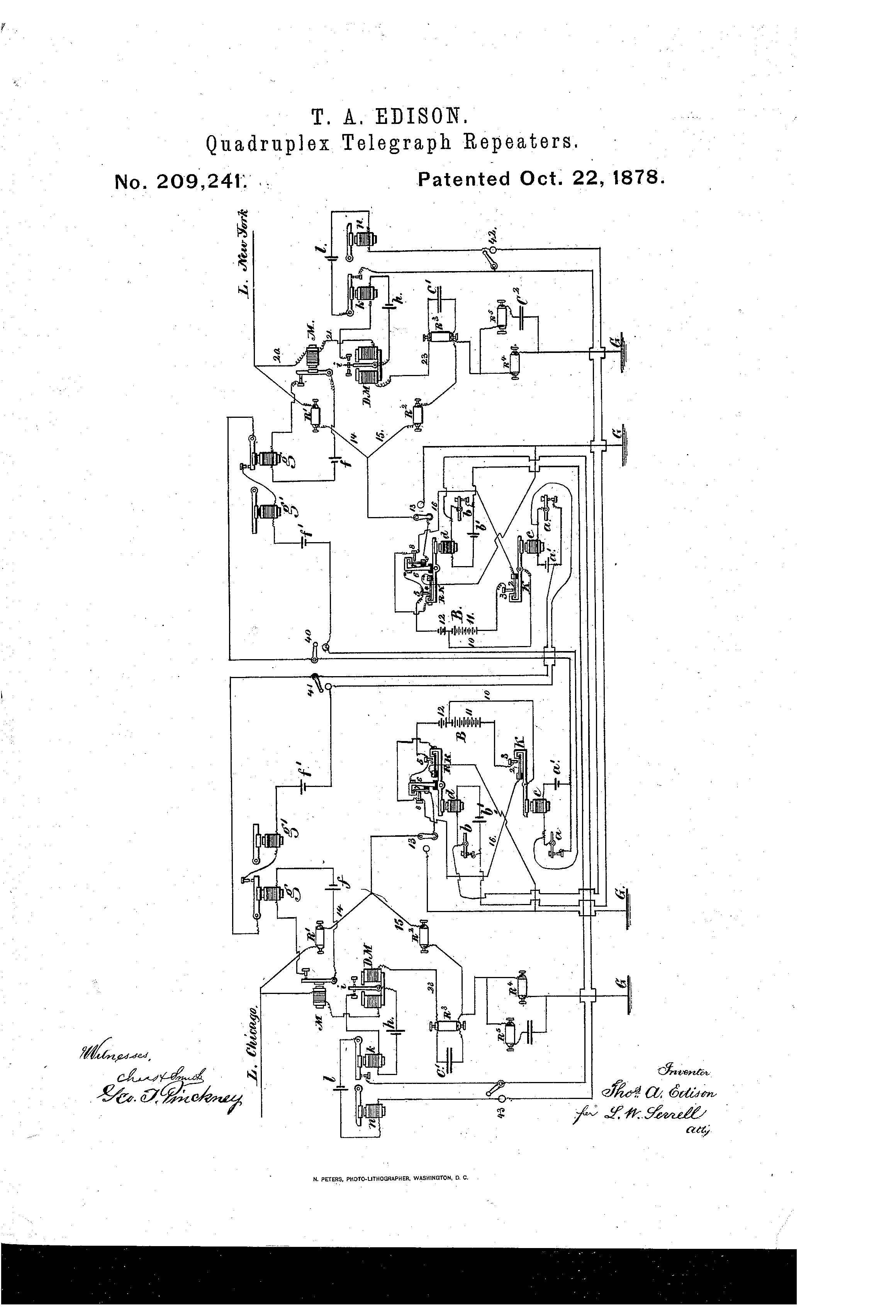How did the Quadruplex Telegraph Work?
In 1874, inventors were already experimenting with ways to make the telegraph more efficient. These inventors include Julius Wilhelm Gintl and J. B. Stearns, who focused on sending one message in each direction down one wire at the same time. Neither one had made the technology commercially viable.
Their invention was known as the duplex telegraph, and Edison developed his own version. He took it one step further, and added the ability to send two messages in each direction at the same time (known as the diplex telegraph), leading to four simultaneous messages.
“The bridge configuration produces the duplex action (excitations are prevented from driving the local sounders), and diplex (two messages in same direction simultaneously) is accomplished by sending one message with current polarity and the other with current amplitude (small or big).”
- Don Fulton (Electrical Engineer)
“The invention was tested a week ago in Boston, with the greatest sucess, and is certain to mean in the near future practically doubling the message carrying capacity of all the telegraph lines in use.”
- Chicago Tribune
